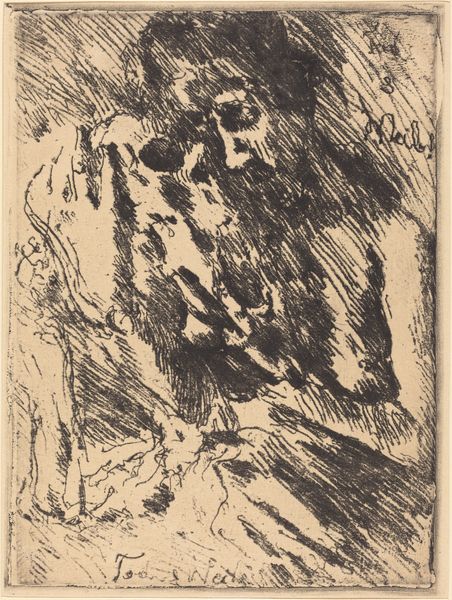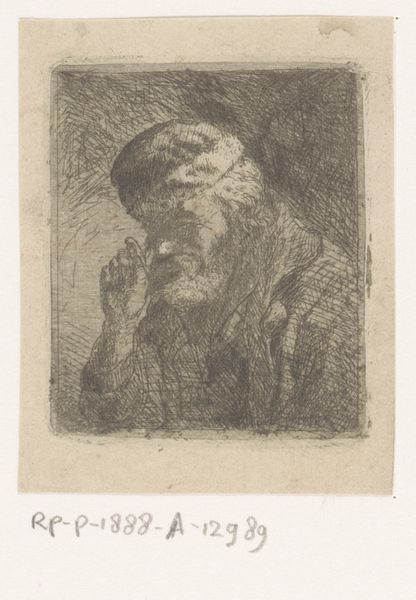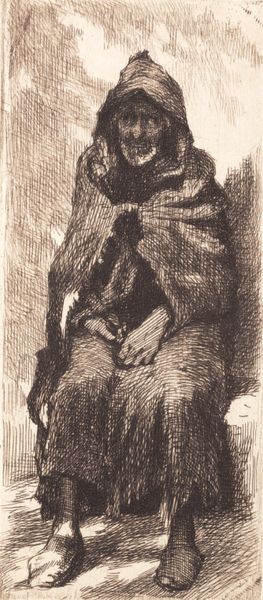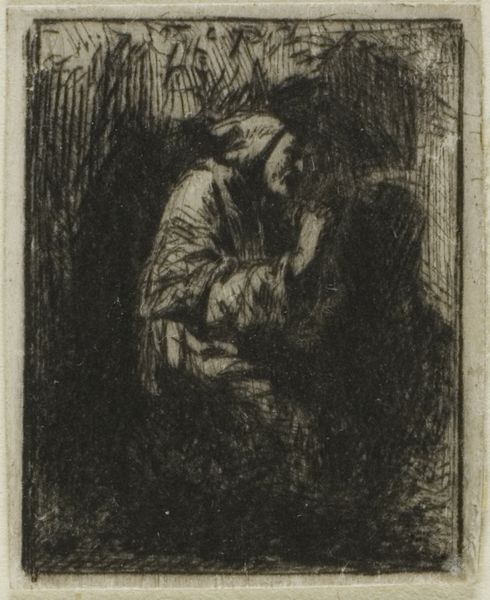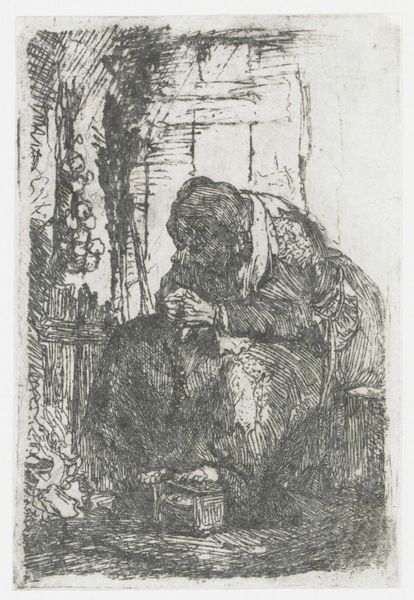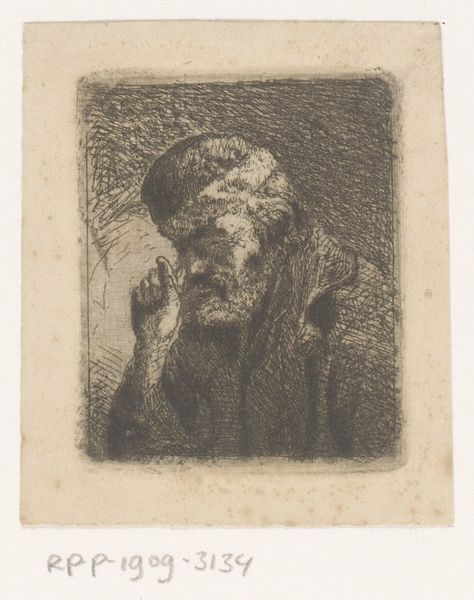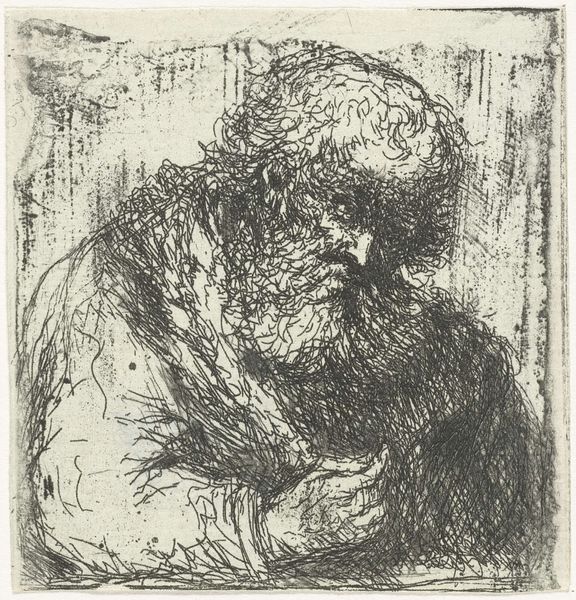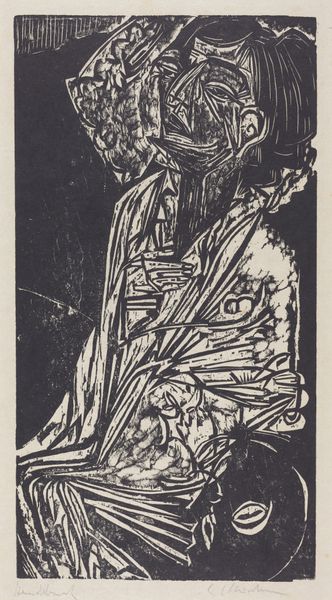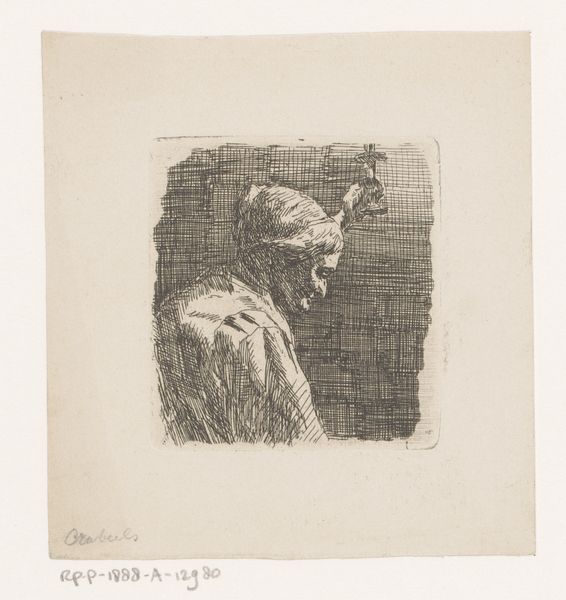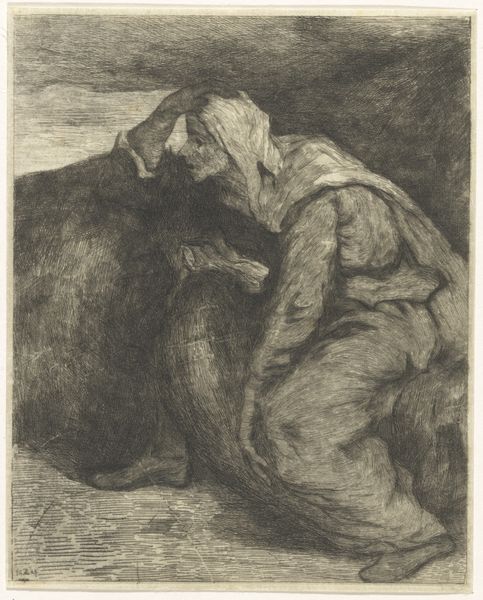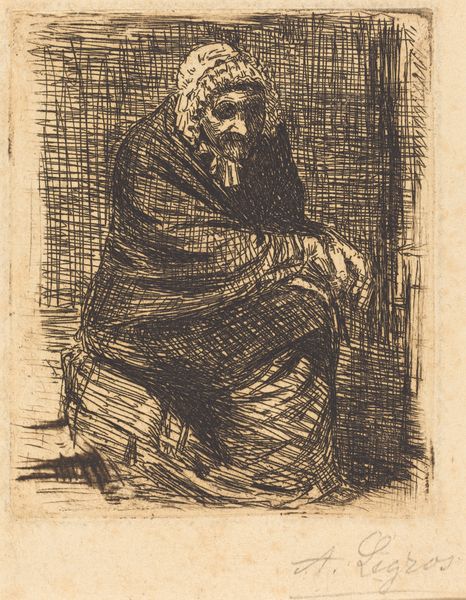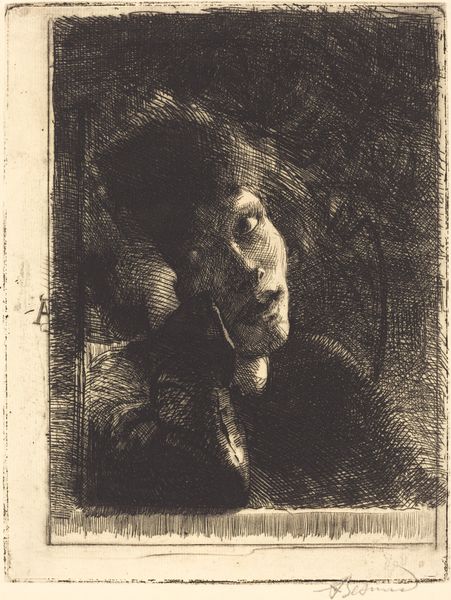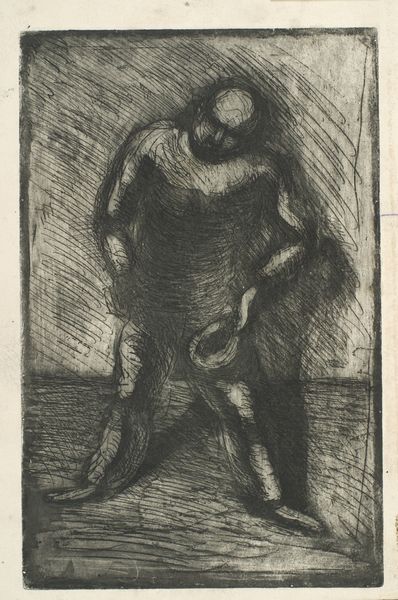
Dimensions: Sheet: 9 3/8 × 12 3/16 in. (23.8 × 30.9 cm) Image: 4 5/16 × 5 1/16 in. (10.9 × 12.8 cm)
Copyright: Public Domain
Editor: This is “Petites Barques,” an etching by Charles Jacque, dating sometime between 1830 and 1894. It’s currently at the Met. It's a very dark, intense image… What narratives or symbols jump out at you? Curator: It’s fascinating how Jacques uses such a dense network of lines to create both form and mood. Note how the hunched figure with the deeply shadowed face carries the weight of something significant. This posture itself is an enduring symbol, found across centuries and cultures – from ancient Greek philosophers to Renaissance depictions of melancholy. Editor: You mean like the weight of the world? Curator: Perhaps, or the burden of memory. Notice also the second face, subtly emerging from the dark tangle of the background, as if an ancestor lurking in the shadows. What do you make of that positioning? Is that an individual figure, a representation of a crowd of people, or a representation of trauma passed down from generation to generation? Editor: That’s… haunting. It makes the figure's pose feel less like simple pensiveness and more like active mourning or regret. Like this figure carries generations in itself. Curator: Exactly. Jacque may have tapped into a cultural memory of hardship or resilience. Even small boats—"Petites Barques"—can carry profound historical echoes, think of those carrying refugees and enslaved individuals. Do you think there is a possibility this is a Biblical image? Editor: Wow, I didn’t even consider it from that angle! Seeing how potent a single pose or the placement of faces can be shifts how I view art entirely. Curator: And that’s the power of art! To continually reinterpret, re-evaluate the echoes resonating between the image and the observer.
Comments
No comments
Be the first to comment and join the conversation on the ultimate creative platform.

